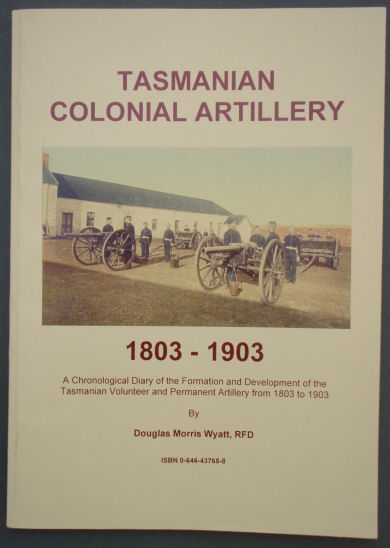Description
Title: A History of ‘A’ Battery New South Wales Artillery (1871 – 1899) Royal Australian Artillery (1899 – 1971)
Author: Cubis, Richmond (Lieutenant-Colonel)
Condition: Very Good
Edition: 1st Edition
Publication Date: 1978
ISBN: 0855510129
Cover: Hard Cover with Dust Jacket – 335 pages
Comments: The history of ‘A’ Battery New South Wales Artillery (1871 – 1899) and Royal Australian Artillery (1899 – 1971).
With its origins stretching back to the colonial period, A Field Battery is the oldest serving unit in the Australian Regular Army. Despite its long and distinguished history, A Field Battery did not participate in the Vietnam War until the final year of Australia’s commitment to the conflict. After serving in Malaysia the battery returned to Australia in 1967, joining the 19th Composite Regiment at Holsworthy. In 1969 the 19th Composite Regiment became the 12th Field Regiment, consisting of the 104th Field Battery and A Field Battery. Having spent 12 months in north Queensland undergoing pre-operational training, A Field Battery arrived at Nui Dat in late January 1971. The arrival of the 104th Field Battery in Vietnam in May 1971 reconstituted the 12th Field Regiment, and this organisational arrangement persisted for the rest of A Field Battery’s tour of duty.
In February 1971 A Field Battery assumed the role of general support for the Australian Task Force. At the time the battery was awaiting the arrival of the 3rd Battalion, Royal Australian Regiment (3RAR), which had been designated as its affiliated battalion. On 2 March 1971 both 3RAR and A Field Battery saw action for the first time, when D Company, 3RAR, became involved in a night-long contact with a company-strength enemy unit known as Chan Duc. In this engagement a section of A Field Battery fired illuminating shells from Fire Support Base (FSB) Marj, while the remainder of the battery fired high-explosive shells from Nui Dat.
In March 1971 the battery supported 3RAR during two encounters with D445, the local Viet Cong battalion. In the first of these encounters a New Zealand artillery unit joined A Field Battery at FSB Beth, thus forming an ANZAC battery.
In April 1971 battery headquarters and the section that had been at FSB Marj moved north to FSB Ziggy, in order to cooperate more closely with 3RAR. The other section of A Field Battery occupied FSBs Jane and Lindy in support of 2RAR, before being relieved at Lindy by the 104th Field Battery.
A Field Battery deployed to FSB Pamela on 5 June 1971 as part of Operation Overlord. On the following day 5 Platoon, B Company, 5RAR, engaged in heavy fighting with a North Vietnamese regiment. When forward observer Second Lieutenant Ian Mathers, from A Field Battery, was killed during the fighting on June 7, his assistant, Lance Bombardier “Blue” Maher, directed battery fire for nine hours, sometimes to within 100 metres of the Australian infantry. Maher was awarded the Military Medal for his part in the engagement, in the course of which the A Field Battery fired 1,100 rounds.
On 1 August 1971 A Field Battery celebrated its centenary. Some members of the battery flew to Sydney to take part in a ceremonial parade at Victoria Barracks, where a crowd of 5,000 spectators watched the battery’s 67-year-old King’s Banner replaced by a new Queen’s Banner. In Vietnam three of the battery’s guns were at FSB Lynette and the other three were at Nui Dat, where a ten-gun salute was fired at midday. A total of 50 rounds were fired at various locations in Australia and Vietnam to mark the occasion. At Nui Dat there was also a church service and an official lunch. Afterwards there was a party, at which the officers and senior NCOs served a meal to the men.
In late 1971 Australia’s commitment to the Vietnam War was being scaled down. In August and September of that year A Battery closed down several FSBs as part of a wider cessation of operational activity. In October the battery moved from Nui Dat to seaside Vung Tau, departing for Australia on 6 November 1971 aboard HMAS Sydney.
Tattered dust jacket otherwise in very good condition.



